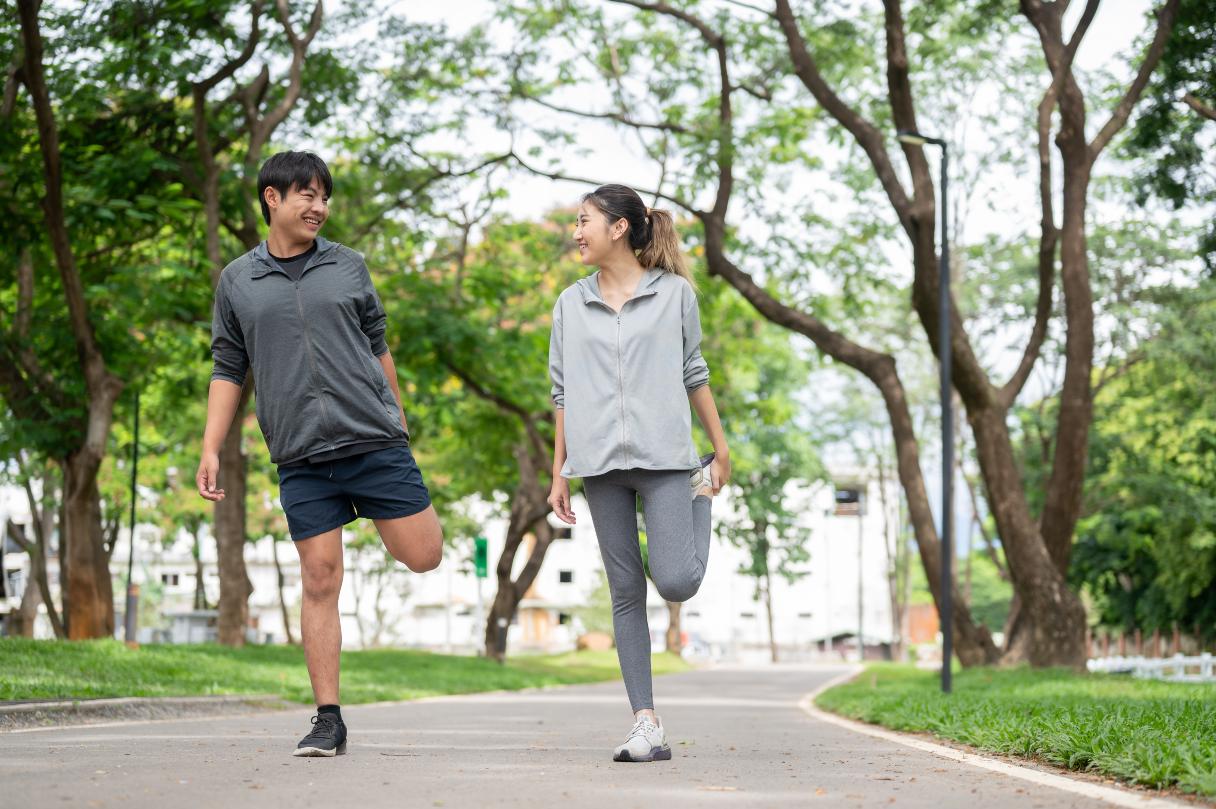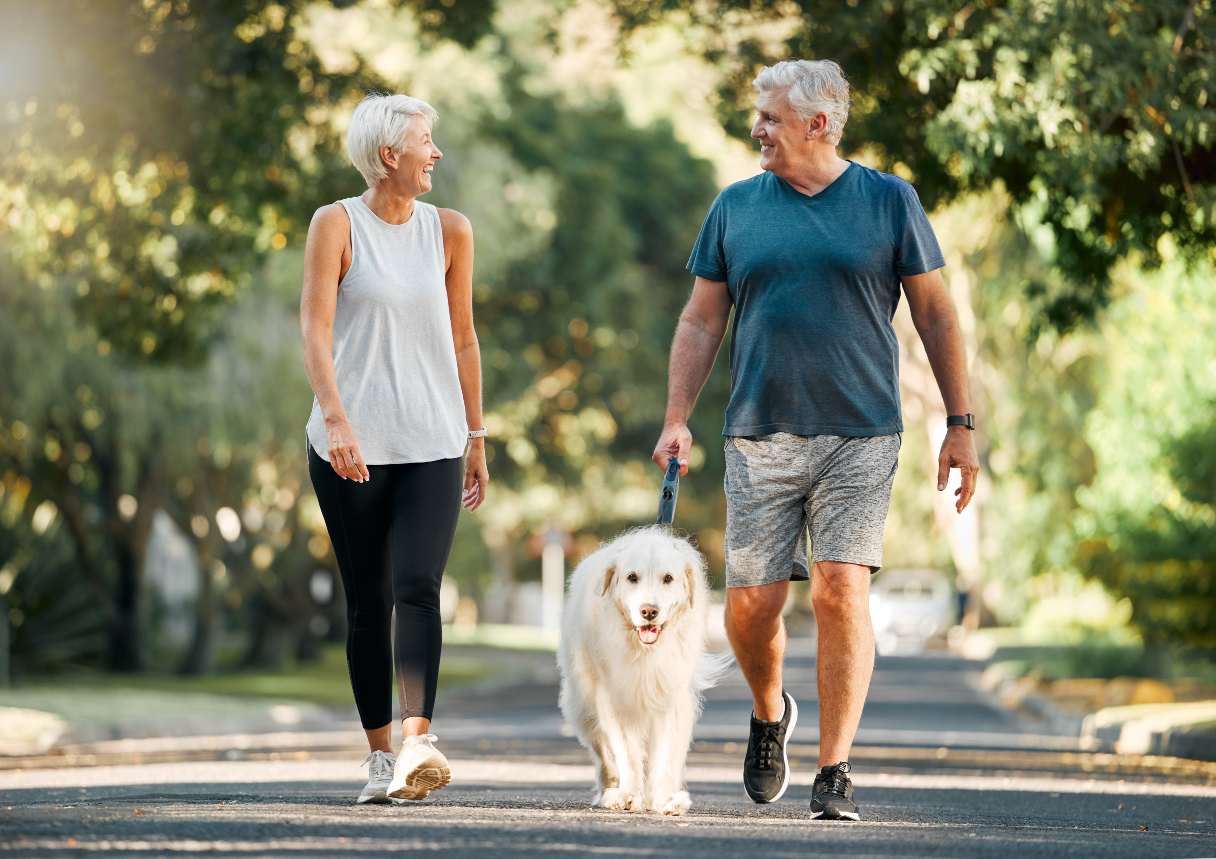Do you have pain in your knees that has lasted longer than three months? If so, you may have chronic knee pain, which is a widespread condition that affects millions of people in the United States each year.1
The prevalence of chronic knee pain increases with age, with 25% of people over the age of 55 complaining of pain during the year. This can be caused by the natural wear and tear of the knee joints. However, chronic knee pain can affect people of any age.2
Read on to learn what might be behind your knee pain and how it can be managed.
Common Causes of Soreness and Pain in Knees
In addition to age, chronic knee pain is commonly triggered by weight, injuries and other medical conditions.2 In this section, we break down the most common causes, their symptoms and contributing factors.3
Osteoarthritis
One of the most common types of chronic knee pain is degenerative osteoarthritis (OA), which occurs when there is a progressive loss of cartilage in the knee.3
The prevalence of OA is growing because of an aging population, with 22.9% of people aged 40 and over complaining of OA knee pain.1
If left untreated, OA can become disabling. The most severe cases will result in a knee replacement.3
Symptoms of OA can include:3
-
A dull, aching or throbbing sensation4
-
A popping sound5
-
Feeling like the knee is unstable4
-
Loss of range of motion5
-
Pain that gets worse over time
-
Pain with movement
-
Stiffness
-
Subtle pain that comes on gradually
-
Swelling
Common contributing factors for developing OA include:3
-
Age
-
Gender (females are more prone to OA)
-
Genetics
-
Imbalance
-
Jobs with prolonged standing or knee bending
-
Metabolic syndromes
-
Muscle weakness
-
Race
-
Weight
Rheumatoid arthritis
Rheumatoid arthritis (RA) is an autoimmune disease that attacks joints in the body, causing pain and inflammation. RA of the knee is caused by swelling of the lining of the knee joint, called the synovial tissue. It typically affects both knees.6
About 1.5 million adults are living with RA, and if left untreated, it can cause serious disability.6
There is no known cause of RA, but experts believe it does have a genetic factor that makes certain people more prone to develop the disease. Smoking and infection have been shown to trigger RA in some people.6
Symptoms of RA can include:6
-
Fatigue
-
Joint deformities
-
Knee feels warm to the touch
-
Pain
-
Stiffness that can last hours
-
Swelling of the knee
People with RA may have pain in multiple joints, not just the knee. Fever, loss of appetite and decreased energy are also symptoms of RA.6
Overuse and repetitive strain injuries
Another common cause of chronic knee pain is overuse and repetitive strain injuries, causing inflammation in the ligaments and tendons.7
This type of knee pain is often found in athletes and people who use their knees repetitively at work.7
These are types of overuse knee injuries that occur in different parts of the knee:7
-
Baker’s cyst is a swelling or fullness at the back of the knee.
-
Bursitis is swelling of the small sacs of fluid surrounding your knee, and it can lead to infection.
-
Iliotibial band friction syndrome is pain on the outside of the knee triggered by running, cycling, etc.1
-
Jumper’s knee (patellar tendinitis) is an ache in the front of the knee below the kneecap.
-
Quadriceps tendinitis is pain at the top of the kneecap.8
Previous injuries
A flare-up from a previous knee injury — like those from sports or other accidents, such as falls, trauma or motor vehicle crashes — can also cause chronic knee pain.1
Common knee injuries are often caused by movement or impact:9
-
Anterior cruciate ligament (ACL) tear is caused by changing direction rapidly or landing a jump incorrectly.
-
Collateral ligament injury is a direct blow to the outside of the knee.
-
Dislocation of the knee bone is caused by falls, sports injuries and car crashes, but it can also result from a structural abnormality.
-
Fracture of the patella (knee bone) can also be caused by a fall, a direct hit (like a strike from a high-speed baseball) or severe impact with the dashboard during a motor vehicle collision.
-
Meniscal tear can be caused by twisting, cutting, pivoting or even arthritis.
-
Posterior cruciate ligament (PCL) injury is a blow to the front of the knee while the knee is bent.
-
Tendon tear is common in middle-aged people who run or play jumping sports.
Obesity and lifestyle factors
Obesity is a contributing factor to chronic knee pain. Osteoarthritis cases are rising along with obesity rates.10
Carrying extra body weight puts added stress on joints and muscles and can accelerate the destruction of cartilage in the knee.10
Here are some ways obesity can affect OA:10
-
Being just 10 pounds overweight can put an extra 15 to 50 pounds of pressure on the knees.
-
Extra fat speeds the destruction of cartilage.
-
Extra weight can lead to low-grade inflammation, making arthritis more likely.
-
Obese people with OA are five times more likely to develop it in both knees.
Knee Pain Location and What It Could Mean
When it comes to knee pain, location and type of pain matter.
Sudden knee pain is usually caused by an acute injury, whereas gradual pain that gets worse over time is typically linked to a chronic condition like arthritis.11
Pain behind the knee
If you experience pain in the back of the knee, it may be due to overuse of muscles, tendons or ligaments from running or cycling. Some common causes of pain behind the knee include:11
-
Baker’s cyst
-
PCL injury
-
Tendonitis
Inner knee pain
Inner knee pain can be the result of overuse or a traumatic event like twisting or falling directly on the knee. Pain of the inner knee has been linked to:11
-
Injury to the medial meniscus (cartilage in the inner side of the knee)
-
Medial collateral ligament (MCL) tears
-
Osteoarthritis
Kneecap pain
While an impact fall on the kneecap can cause acute pain, kneecap pain is usually caused by damage to the joint where the kneecap (patella) meets the femur (thigh bone). This joint is called the patellofemoral joint.11
Some causes of pain to the patellofemoral joint include:11
-
Fat pad impingement syndrome (inflammation of the fat pad beneath the patellar tendon)
-
Osteoarthritis
-
Overuse
-
Plica syndrome (inflammation of the folds of tissue in the knee joint)
-
Runner’s knee
-
Squatting or climbing stairs
Outer knee pain
Pain on the outer part of the knee, also known as lateral knee pain, is typically a sign of:11
-
Arthritis
-
Iliotibial band syndrome (inflammation of connective tissue from hip to outer knee)
-
Injury to the lateral collateral ligament, which supports the outer knee
-
Tear in the lateral meniscus, which provides shock absorption and stability in the knee joint
-
Weakness of the glute muscles at the hip
Swelling or inflammation
Knee swelling can be the result of an acute injury or chronic knee pain.11
Swelling after a fall or immediate trauma can be serious and point to a fracture or ligament tear, which would require immediate medical assistance.11
Knee swelling associated with chronic knee pain can be the result of fluid changes in the knee that can fluctuate with weather changes or physical activity.11
Referred pain
Knee pain can sometimes be the result of an injury to another part of the body, such as the hip or a nerve.3
This is called referred pain and can be diagnosed by a doctor by obtaining a medical and physical history along with imaging (X-ray, MRI, etc.).3
Diagnosing Chronic Knee Pain
If you are experiencing knee pain that doesn’t go away or gets worse with time and rest, then it’s time to see a doctor to find out what’s going on.3
When you visit a doctor about chronic knee pain, they will typically use the following to diagnose the cause of the pain:3
-
Detailed medical and surgical history
-
Neurovascular exam (sensory and nerve tests)
-
Physical examination of the knee
-
Radiographic imaging
Treatment Strategies for Chronic Knee Pain
Treatment for knee pain usually starts with the RICE protocol (rest, ice, compression and elevation) to see if pain is minimized.9
Non-surgical treatments
If pain continues, then non-surgical treatment interventions are usually prescribed before considering surgery.9
-
Physical therapy and exercise. The first line of treatment for chronic knee pain is patient education and physical therapy.3 Supervised exercises along with an at-home exercise program have been shown to have the best results for decreasing chronic knee pain.3
-
Lifestyle modifications. Giving your knees a rest and modifying your activity may help reduce chronic knee pain. Losing weight by eating a healthy diet and doing low-impact aerobic exercises can help take stress and pressure off your joints, resulting in less pain and more mobility.3
-
Medications. Non-steroidal anti-inflammatory drugs (NSAIDs) and pain medications are commonly used to help reduce chronic knee pain, including ibuprofen and naproxen, acetaminophen, COX-2 inhibitors (Celebrex) and glucosamine and chondroitin sulfate (supplement containing cartilage).
-
Alternative therapies. Alternative therapies that may help reduce inflammation and chronic knee pain include wearing a knee brace can help take the load off the affected knee, acupuncture, massage and chiropractic options.12
Injections and surgical options
When lifestyle changes and over-the-counter medication do not help to relieve knee pain, or if the pain gets worse, it may be time to consider more invasive options like injections and surgery.3
-
Corticosteroid injections directly into the knee can help temporarily reduce inflammation and give relief from knee pain.
-
Hyaluronic acid injections into the joint can act as a lubricant to alleviate stiffness and pain.
-
Partial knee replacement (unicompartmental knee arthroplasty (UKA) removes only the damaged part of the knee.
-
Total knee arthroplasty (TKA) is a total knee replacement that swaps out joints with artificial components (metal/plastic).
Home Remedies
In addition to rest, ice, compression and elevation, there are other ways you can treat knee pain at home and help improve your quality of life.
These remedies and tips include:13
-
A bath with Epsom salt to help reduce inflammation and stiffness
-
Dietary supplements — including turmeric, ginger, magnesium and apple cider vinegar — to help reduce inflammation and pain
-
Gentle stretching of the knee muscles to reduce stiffness and increase flexibility
-
Knee strengthening exercises to increase support and reduce pain
-
Staying hydrated
-
Practicing good ergonomics, like sitting up straight and stretching throughout the day
-
Using heat therapy with a warm compress, heating pad or warm bath
-
Wearing cushioned shoes with good arch support can help take stress off the knees
When to Seek Professional Help
If treatment with over-the-counter medication and home remedies is not working, it’s a good idea to seek the care of a professional, such as an orthopedic specialist, to find out the underlying cause and diagnosis.13
Consider seeing a doctor if you are having these persistent symptoms:13
-
Any deformity
-
Can’t bear weight on your knee
-
Can’t bend or straighten your knee
-
Fever or redness accompanies the pain, or the knee is hot to the touch
-
Pain doesn’t improve with rest, ice, compression and elevation
-
Pain gets worse over time
-
Swelling that does not go down
Once the doctor pinpoints the cause of pain, they can recommend further treatment options that may include physical therapy, injections or surgery.13
Manage Your Chronic Knee Pain
The bottom line is that chronic knee pain is on the rise due to an aging population and an increase in obesity rates. If left untreated, chronic knee pain can become disabling.
Treatment of chronic knee pain starts with non-surgical interventions, including rest, ice, compression, elevation and anti-inflammatory medication. If pain persists, then doctors may recommend injections or knee replacement surgery.
Managing Health and Wellness Costs With the CareCredit Credit Card
If you are looking for an option to help manage your health and wellness costs, consider financing with the CareCredit credit card. The CareCredit credit card can help you pay for the care you want and need and make payments easy to manage.* Use our Acceptance Locator to find a provider near you that accepts CareCredit. Continue your wellness journey by downloading the CareCredit Mobile App to manage your account, find a provider on the go and easily access the Well U blog for more great articles, podcasts and videos.
Your CareCredit credit card can be used in so many ways within the CareCredit network including vision, dentistry, cosmetic, pet care, hearing, health systems, dermatology, pharmacy purchases and spa treatments. How will you invest in your health and wellness next?
Author Bio
Amy Isler, M.S.N., R.N., has more than a decade of nursing expertise. She combines her nursing experience and journalism background to create engaging and educational healthcare content for leading brands and publications, including GoodRx, Verywell Health, Vision Center and more. Her mission in writing is to provide positive, accurate and informative articles for consumers.







